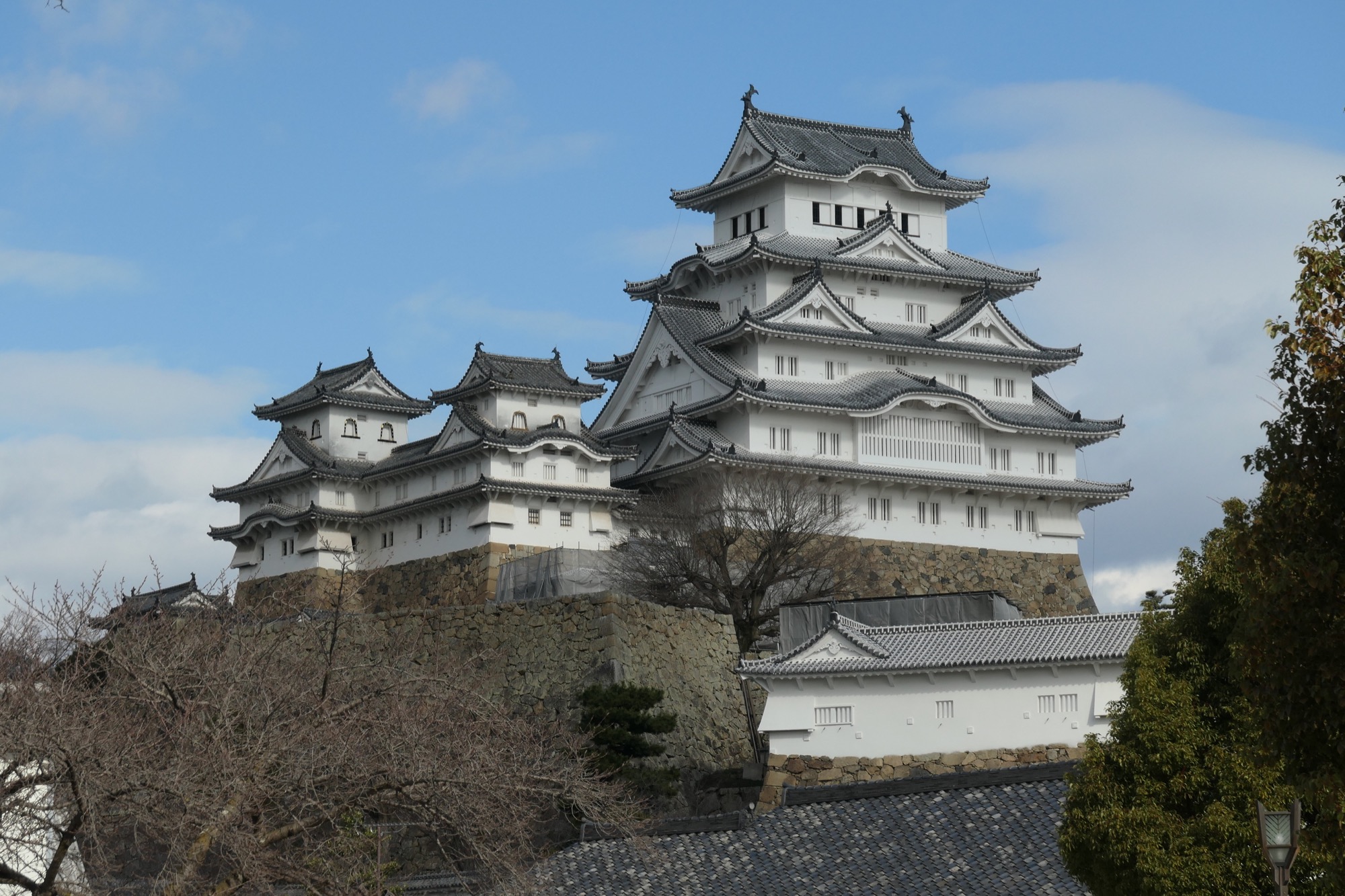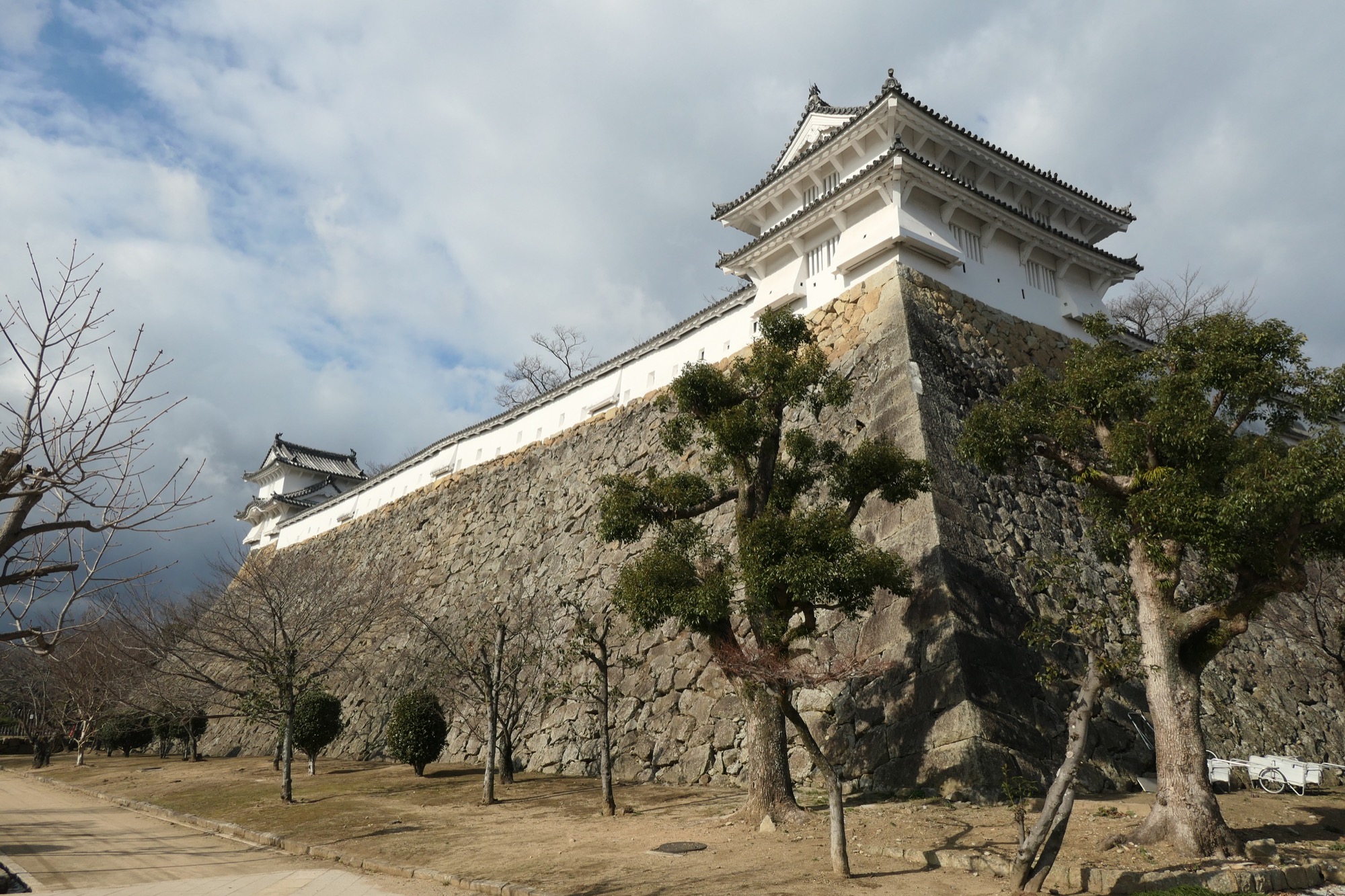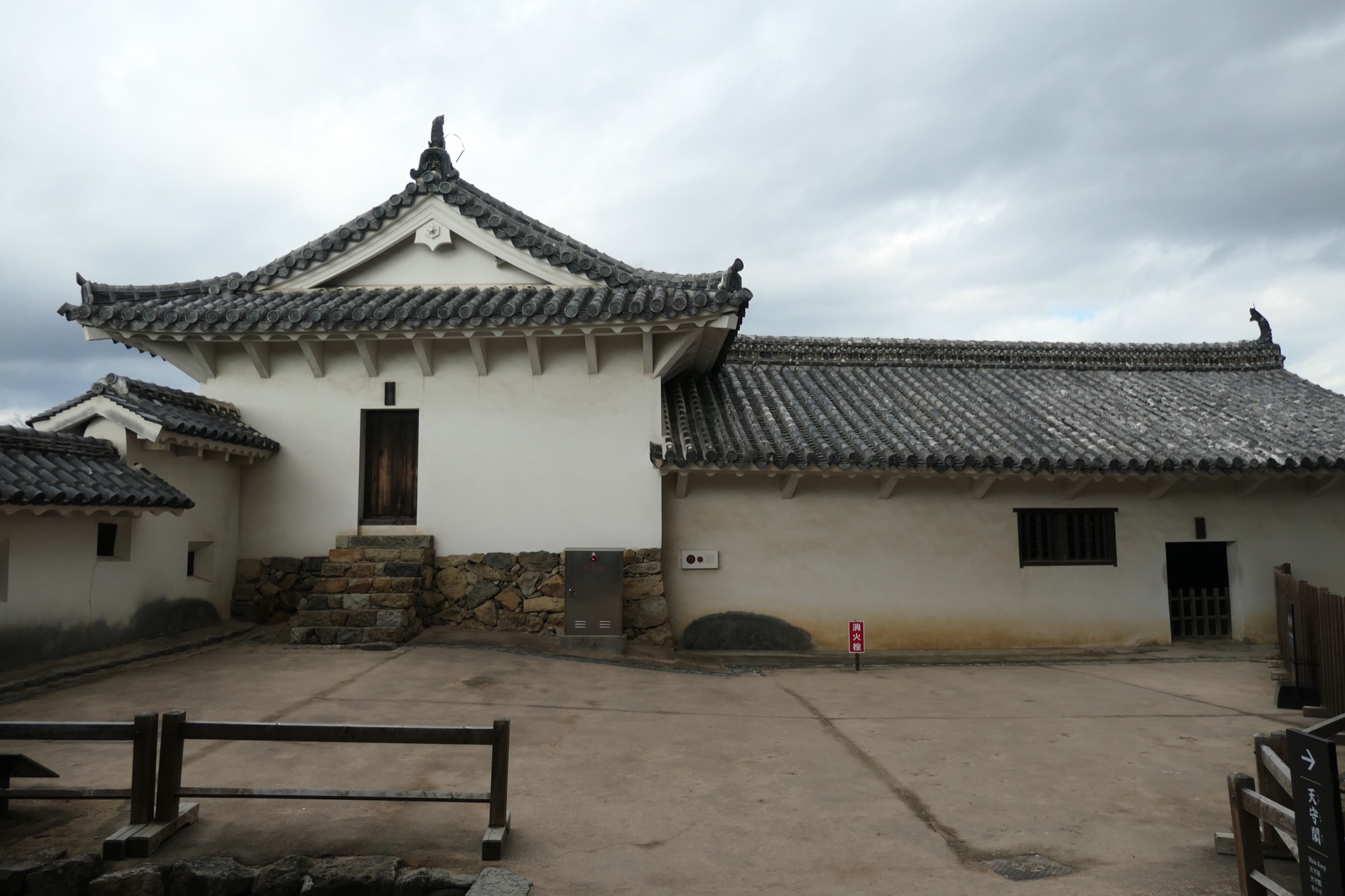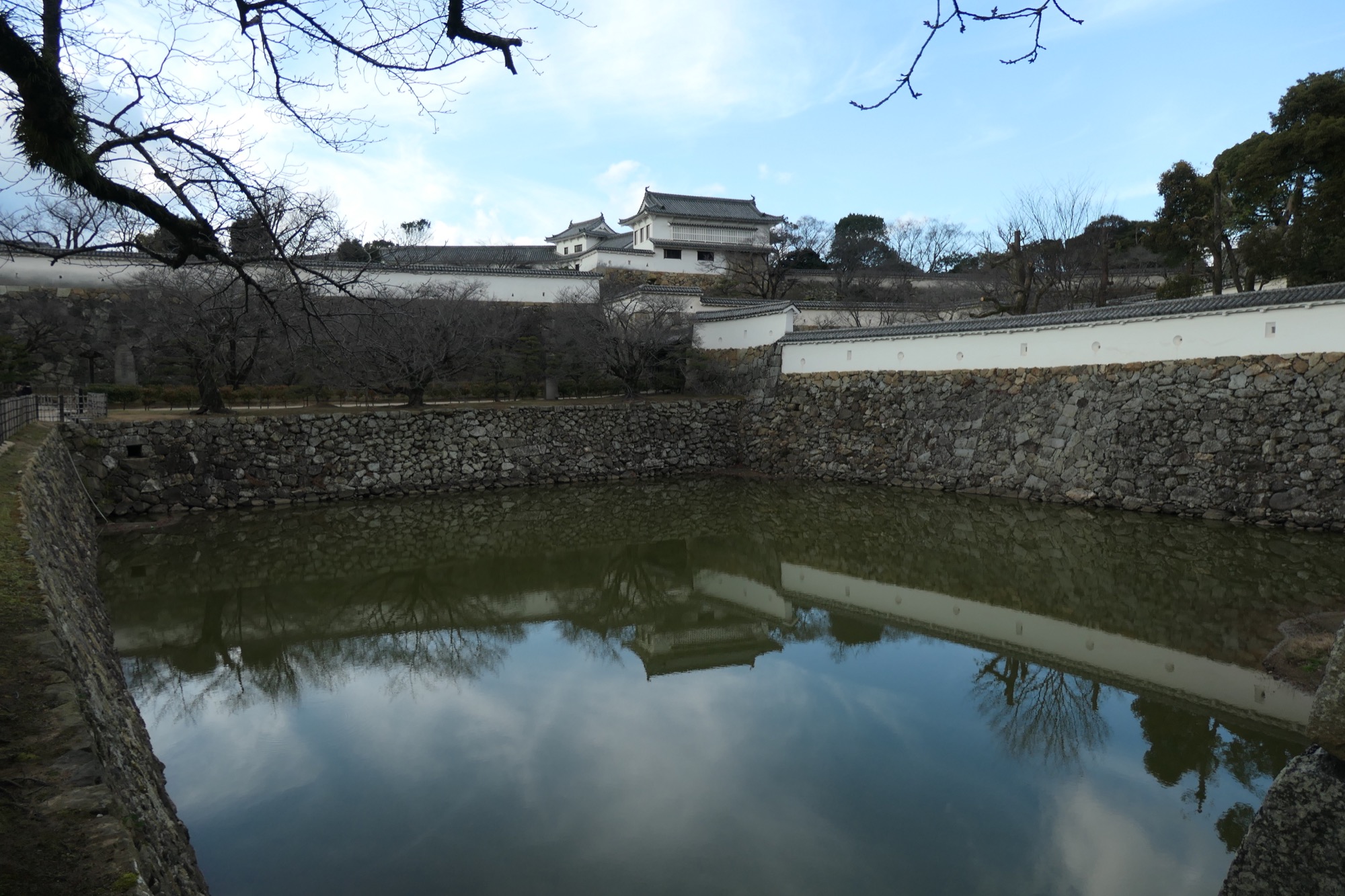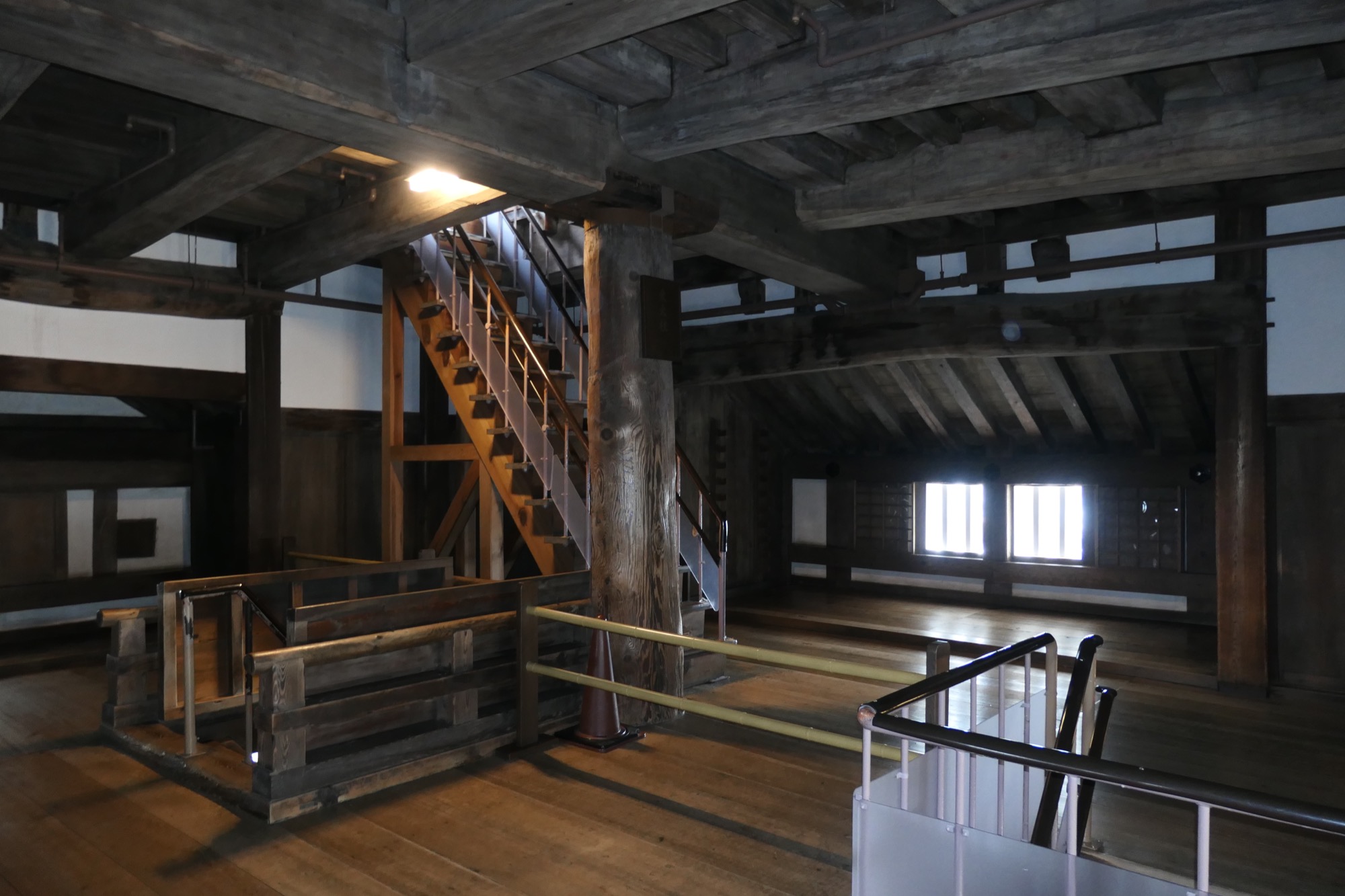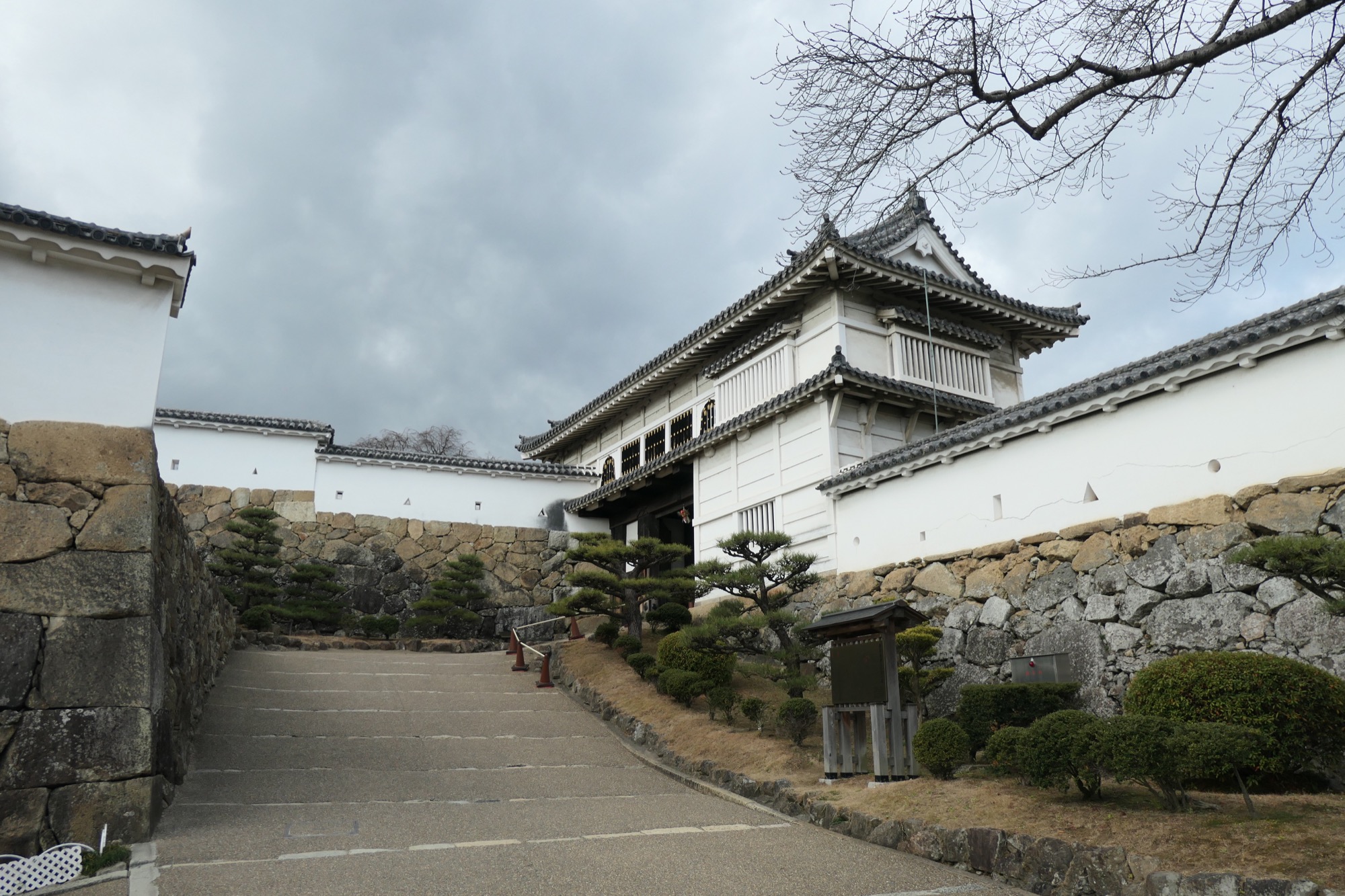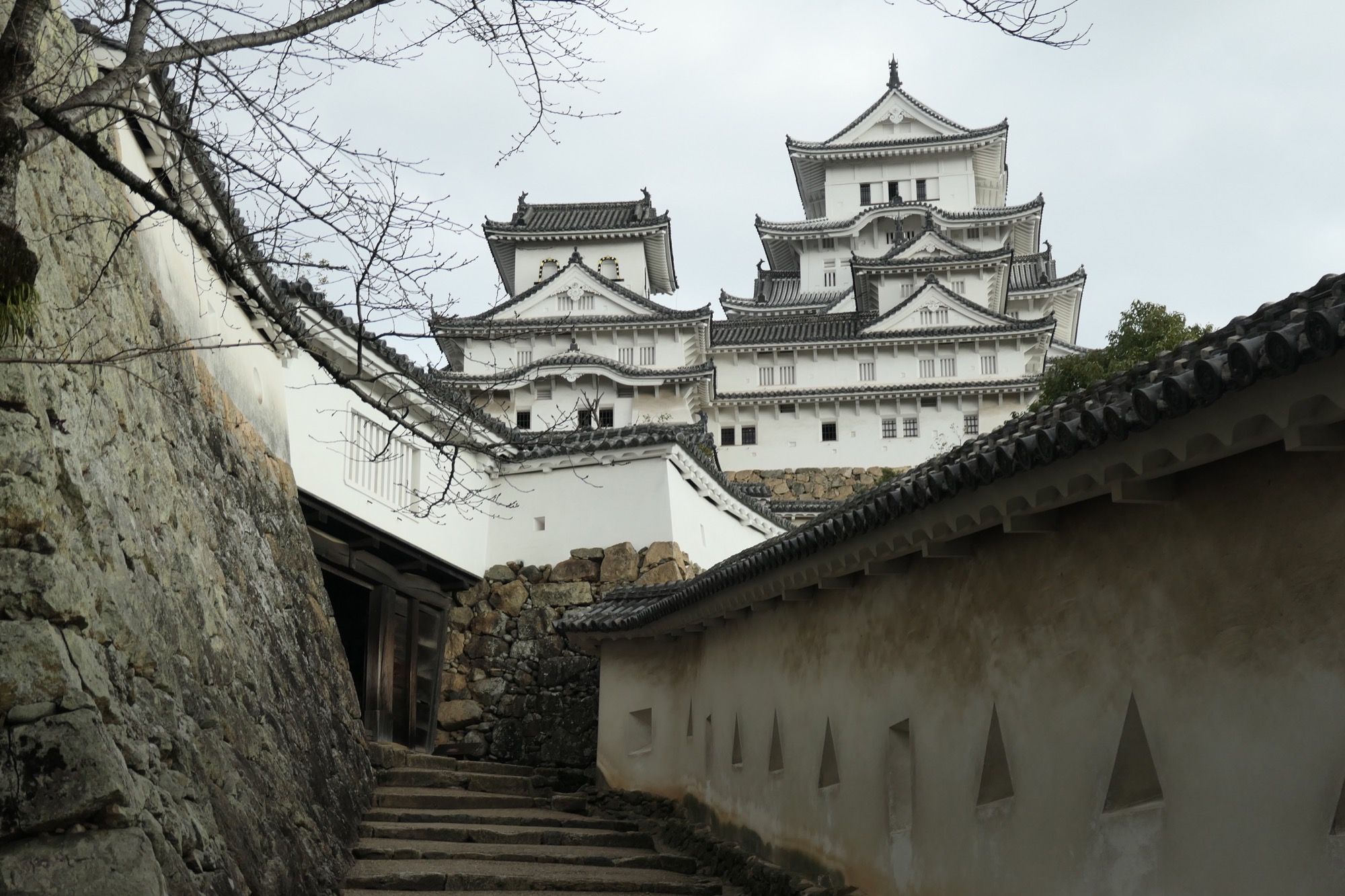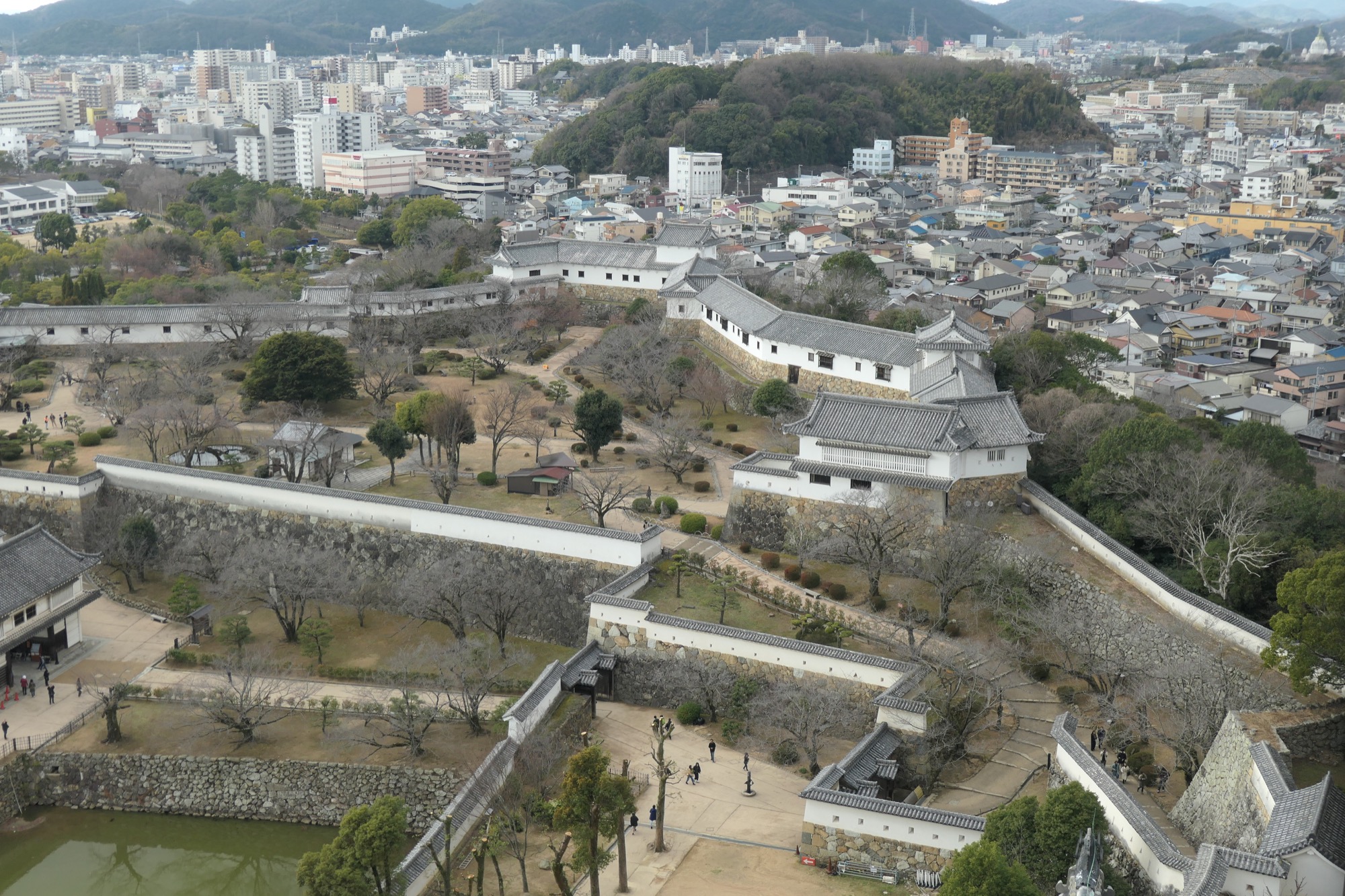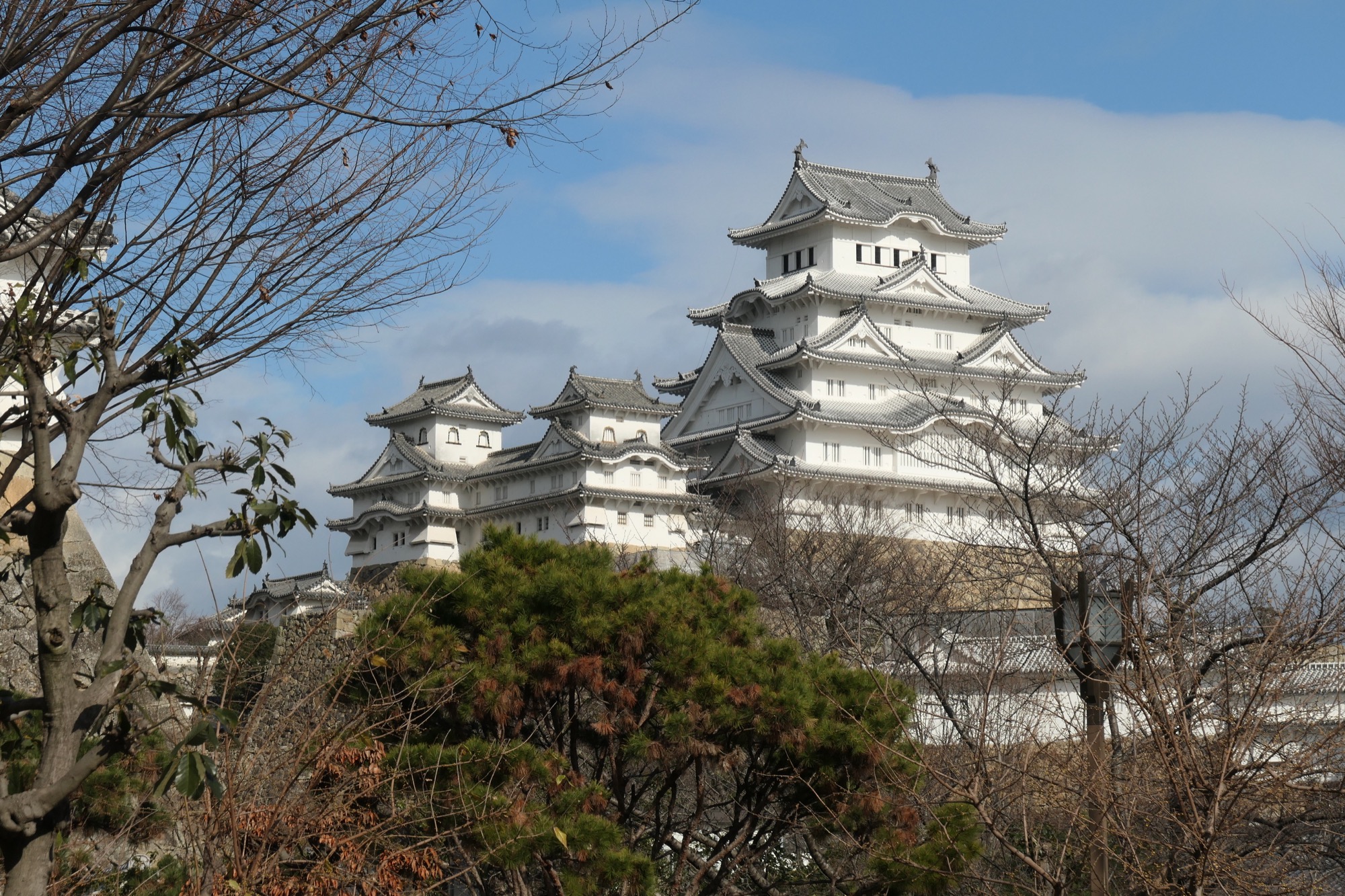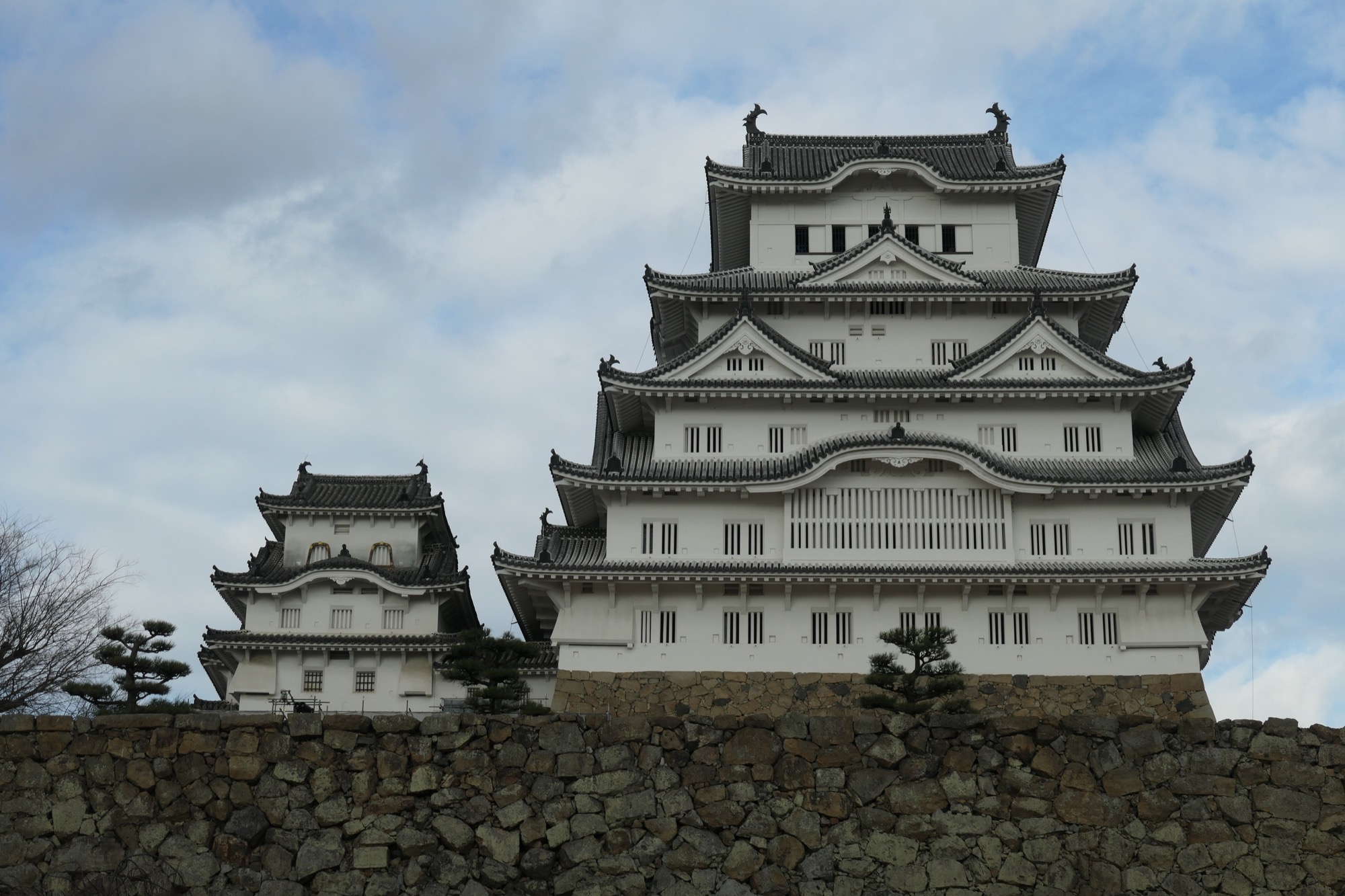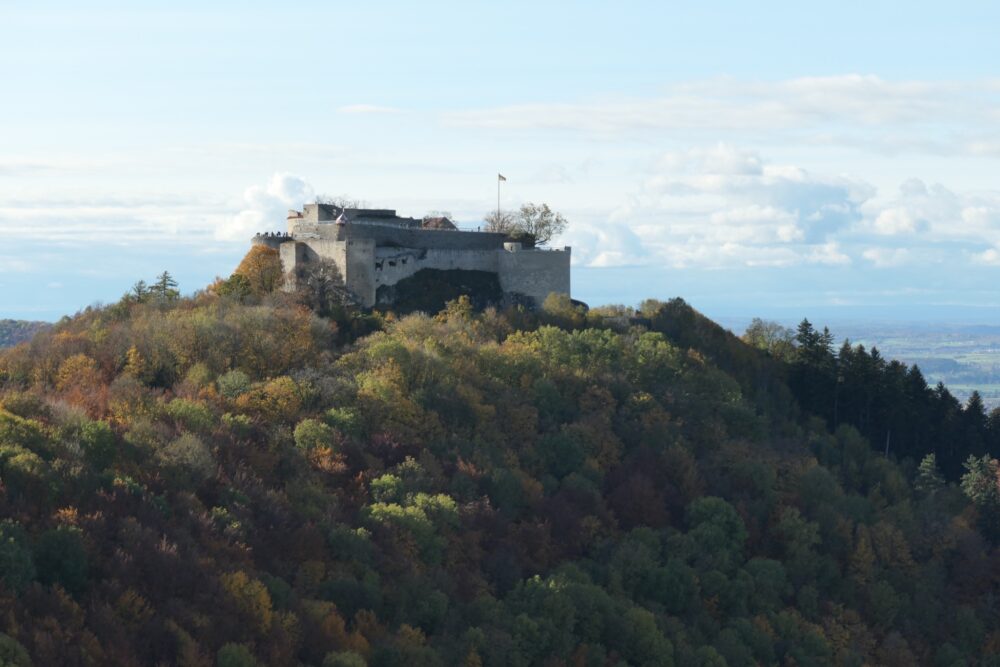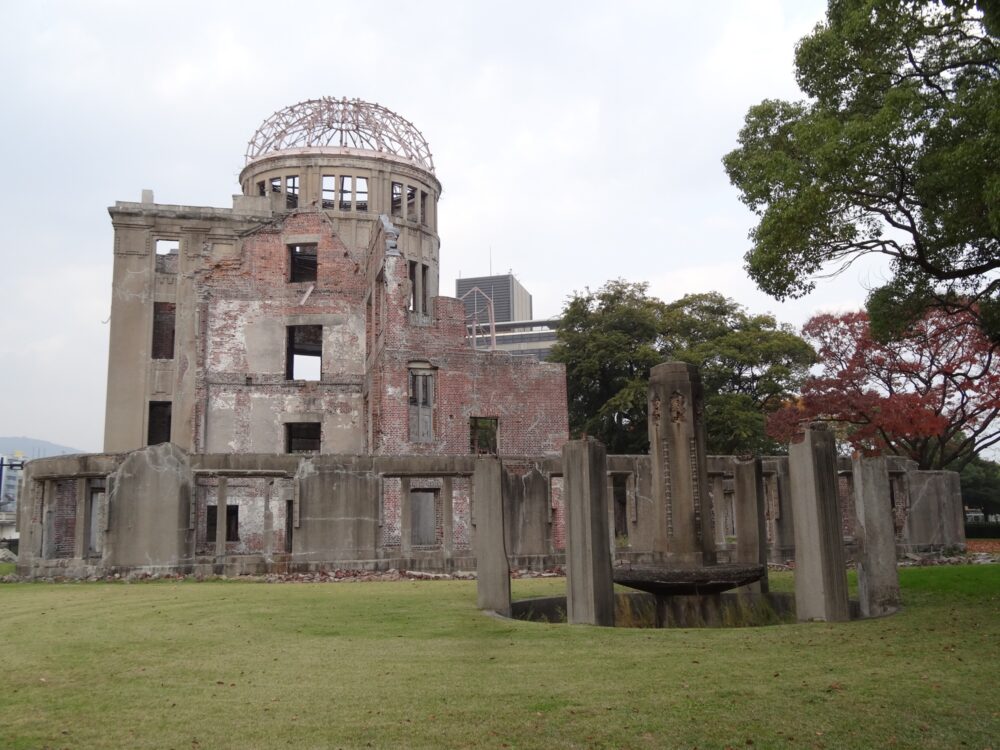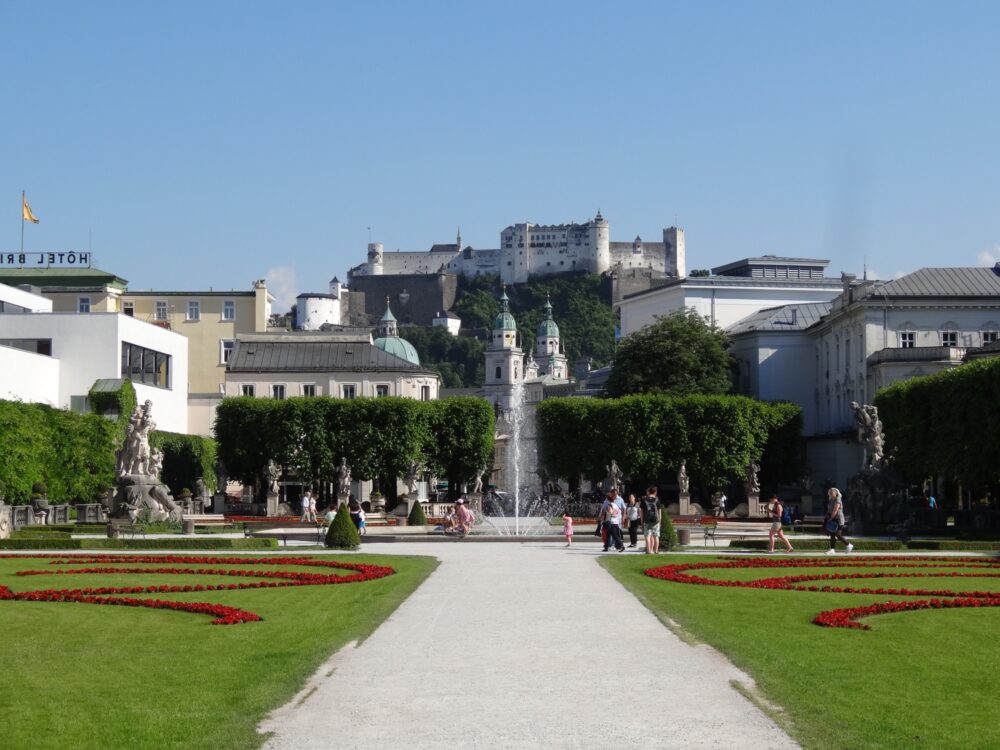Himeji Castle
Of all the dangers that threaten a castle over the centuries, Himeji castle survived three, that each by itself, is usually a certain death sentence. But before getting into the details of it’s turbulent history, let’s do a quick comparison to European castles. As it turns out, Japanese castles are very different than their European counterparts.
Here is a European style wooden castle for comparison.
Japanese vs. European castles
The keeps of Japanese castles are made of wood, and built on a motte of rocks with steep walls. This design is very earthquake resistant. The big rocks lay loosely on top of each other to compensate ground movement and wooden constructions are in general more flexible than brick and mortar ones.
Please consider that earthquakes are in Japan almost as common as a full moon (ok, maybe that was slightly exaggerated, but you get the picture).
Speaking of the steep stone walls: The highest wall at Himeji castle is 26 meters (85 ft) tall.
Beside that, Himeji Castle is the biggest castle in Japan. It covers an area of 233 hectares (576.8 acres). For comparison: Hohentwiel, the biggest ruined castle in Germany, is build on an area of about 9 hectares (22.2 acres).
The castle complex that remains today is over 400 years old. Construction started in 1333, but it was remodeled and expanded until 1618. Today, 83 buildings are left, 74 of which are designated as important Japanese cultural assets. Himeji castle, by the way, is an UNESCO World Heritage and as already indicated, it survived quite a turbulent past. Here are some examples:
- In 1871, Himeji castle was sold at an auction. The buyer’s intention was to get rid of the castle and develop the land. Unfortunately for the buyer, and very much fortunately for us, the costs to destroy the castle were estimated to be too high and the whole idea got discarded.
- In 1945 it survived the heavy bombing of Himeji city, although it was hit by a bomb. Fortunately the bomb failed to go off.
- In 1995 it survived a 6.9 magnitude earthquake with almost no damage, proving the construction style’s earthquake resistance.
- And then there’s the fact that it’s a wooden construction. It borders on a miracle that, over the centuries, no share-happy commander with a spare torch came along…
You know, it’s this kind of “generosity” that significantly accelerates a siege. I mean, why besieging a castle for months, if you can simply burn it down in an afternoon.
But well, for that you need to get close to, and the castle’s sophisticated defenses would have made a direct assault a really stupid idea…
Impregnable Defenses
A closer look onto Himeji Castle’s defenses reveals quite some interesting details. For example:
- The third and fourth floors of the keep have machicolations; Openings where defenders could throw objects on attackers.
- Then there are small, hidden rooms in the keep where the defenders could hide and launch a surprise attack against invaders.
- The outside perimeter of Himeji castle was originally protected by three moats, of which only the inner one remains in its entirety.
- But the pinnacle of Himeji Castle’s defense system is the confusing maze that leads to the castle’s keep. The walled paths are often steep and narrow to slow down attackers while leading through dozens of gates and past countless of loopholes from which the defenders could safely shoot the intruders. These defenses were designed to withstand a direct assault of a vastly bigger army. However, Himeji castle never got attacked that way, and so the defenses remain untested.
Himeji Castle Keep
The main keep is a 46.4 meters (152 ft) tall, six story wooden structure with three smaller adjacent keeps. The top floor provides a great view over the castle complex, Himeji city and the environment. And the castle’s maze-like defenses are nicely visible as well.
Visit Himeji Castle
Himeji castle is located in the city of Himeji in the Hyōgo Prefecture of Japan. It attracts more than 2.5 million visitors each year!
If you have plans to go there, do yourself a favor and avoid any of the Japanese bank holidays, as well as the cherry blossom season, which is between the end of March and the beginning of April. Those days are very crowded.
One of the best times to visit it, in regards to as few visitors as possible, is during the week just after the new year’s holiday.
Beside that, be sure to have a look at Himeji castle’s official website.
